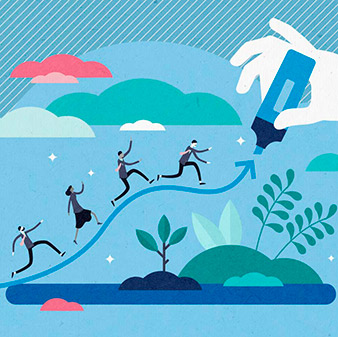
Almost half of consumers would switch brands due to poor customer service
How can I help you? This is one of the most recurring questions in any company. To a greater or lesser extent, wherever there is a company, there is customer service, just as there is a treasury. However, there is still a way to go for this service to stop being the loophole through which dissatisfied users escape, and for this to be possible, automation emerges as a shortcut. This is one of the conclusions of the State of Service report, published by Salesforce.
This is the fifth edition built based on the opinions of more than 8,000 professionals from 36 countries, 300 of them from Spain. The study analyzes the evolution of priorities and needs, revealing, in turn, how the perception of what is good service and what is not is changing, beyond complaint management. Above all, there is one key point: almost 90% of the public say that experience is as important as the product, 8% more than two years ago.
One of the main conclusions of the State of Service report, published by Salesforce, is that automation is becoming essential in customer service.
Or, put another way, providing good service starts with good customer care, something that has been emphasized during the pandemic when companies have been forced to strengthen their online channels. In fact, the 2020 edition of the Salesforce report already highlighted that organizations were at a turning point: faced with an increase in digital interactions, teams had to accelerate their digital transformations to offer the same or better service.
Customer service has remained a cornerstone of organizations, albeit amid changing and omnipresent challenges. The report reveals that the level of demand is higher and that poor, impersonal, or slow service is penalized. So much so that 48% have switched from one brand to another because the latter offers better service, while 94% say that good service makes it much more likely they will return.
Customer service has remained a cornerstone of organizations.
“Customer Service becomes a strategic area within the whole digital transformation that companies are involved in,” says Laura Abarquero, VP of Service Cloud, Salesforce Iberia, the Spanish division of the world leader in CRM. And the report confirms this: 60% of Spanish companies are aware that this area is a revenue generator. In this context, technology emerges as “an enabler to scale the service, offering the quality, speed, and personalization that consumers expect.”
Where good customer care begins
If communication happens when there is a sender, a receiver, and a message, attention exists when there is a focus. Without it, there is dispersion and attention is diluted. This is what happens when a user says they feel like a number, something that 56% of those surveyed by Salesforce say they have experienced. The Oxford Languages dictionary is clear: attention is the act that shows attentiveness to the well-being or safety of a person or shows respect, courtesy, or affection towards someone.
Customer Service becomes a strategic area within the whole digital transformation that companies are involved in.
Laura Abarquero, VP of Service Cloud, Salesforce Iberia
Faced with the risk of impersonal service in an increasingly digital and less physical environment (although the report notes that the phone remains essential), information is key. According to Salesforce, 73% of respondents expect companies to know their specific needs and expectations. And that translates into satisfaction: organizations with the best customer satisfaction scores handle requests, inquiries, or calls empathetically.
Knowledge of needs and any contextual information that helps resolve the inquiry is directly proportional to the performance level of the agents handling inquiries. According to the State of Service report, 46% of lower-performing agents often lack contextual information about the person’s particular situation, a percentage that drops to 27% for higher-performing agents.
73% of respondents expect companies to know their specific needs and expectations.
When information is scarce, disaster ensues. Sixty percent of customers generally feel they are communicating with independent departments, not with a company, while 66% say they often have to repeat or re-explain information to different people. In fact, 83% expect to interact with someone immediately after contact, the same percentage that expects to resolve complex problems by being attended to by a single person.
I want it… now
Finding a balance between speed and quality is not easy, according to 78% of the service agents surveyed, a much higher percentage than the 63% who said this in 2020. In fact, the proportion of those who value speed more has more than doubled since that previous edition. It is a ‘pandemic’ effect that persists, such as the consolidation of digital channels with notable increases in mobile apps, online chat/live assistance, and video assistance services, offered by up to 62% of organizations in Spain.
To maintain a balance between resolution speed and service quality, 63% of service organizations in Spain use process automation. “It is increasingly important to work in two ways: on the one hand, efficient, scalable, and fast processes that respond to requests and, on the other, ensuring that customers ‘return,’ working on their loyalty as a direct contribution to the company’s present and future revenue generation,” summarizes Abarquero.
Source: La Vanguardia



